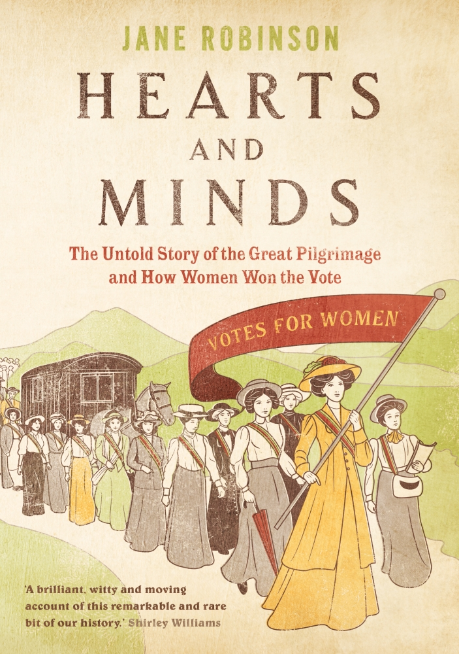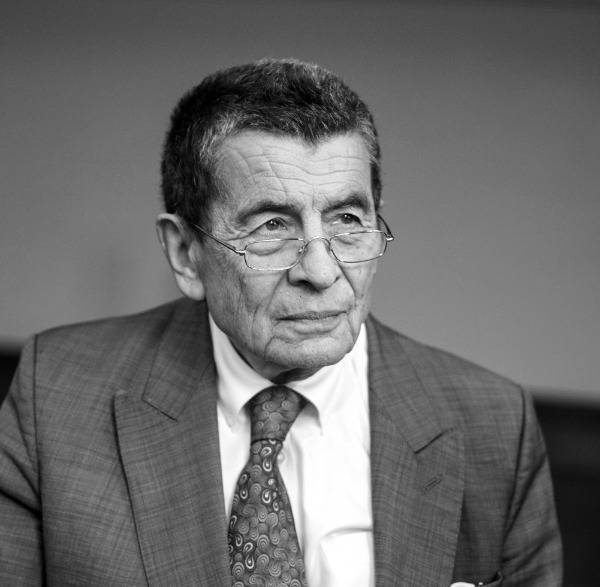
February 2018 marks the centenary of women in the UK being given the right to vote for the first time. The Representation of the People Bill of 1918 only gave the vote to women over 30 - but it was a vital step in the journey towards women's suffrage. The history of how women won the vote is dominated by the militant suffragette movement; but alongside the protesters chaining themselves to buildings were thousands of non-militant campaigners: the suffragists, who campaigned non-violently and tirelessly. Jane Robinson's latest book "Hearts and Minds" tells the story of a six-week protest march that took place in 1913. Known as the Great Pilgrimage, it brought together women from across the country. Here, she discusses their bravery - and how she put the story together.
Why did you decide to write this book? Why this story in particular?
Anyone who is interested in history has to be excited about the centenary of women’s votes. I’ve spent my career writing about the part women have played in society so you can imagine how thrilled I am by the prospect of celebrating 100 years of (partial) democracy. I’ve written books about the struggle for women’s education; about the dawn of political awareness and activism in organisations like the Women’s Institute (which celebrated its own centenary three years ago); it’s inevitable that I should write about the fight for the vote. But what angle to take? Though I have always admired the passion and commitment of the suffragettes, I have never really warmed to them. The suffragists, on the other hand – the non-militant campaigners for the vote - struck me as the sort of people I love to highlight: comparatively ignored, yet highly influential; courageous, spirited, humane and warm-hearted. I decided to explore the part they played in the campaign, and when I found out about their most important achievement, the Great Pilgrimage, I was hooked. Here was a huge story about "ordinary" people doing extraordinary things and consequently, changing the world. And no-one seemed to know about it!
What are the challenges in telling social history through women's voices?
The women of the past have traditionally been caricatured – stereotyped – simply because most history books were written by and about men; they were all about statesmanship and military campaigns, politics and strategies and big ideas. It’s been assumed women had no part to play in all that (they had no vote, after all) and therefore no voice in shaping history nor any right to comment on it. That’s the primary challenge for an historian like me: to get past received wisdom and seek out first-hand accounts by women in letters, diaries and other personal documents. I like to ask for the public’s help in sending me family papers and stories; that way forgotten voices can be heard again, and we can begin to learn what life was really like without the hidden agendas of "official" history.
The book sets out to shatter stereotypes about women's suffrage. What are these stereotypes?
I love shattering stereotypes. For too long historians have talked about "women in general". It’s my mission to persuade readers that there’s no such creature as a woman-in-general. The assumption is that all campaigners for women’s suffrage were militant suffragettes, members of Mrs Pankhurst’s Women’s Social and Political Union (WSPU) dressed in purple and green. In fact, the majority were followers of Millicent Fawcett and the National Union of Women’s Suffrage Societies (NUWSS), whose colours were red, white and green. They were not suffragettes but suffragists, and believed in the power of peaceful persuasion rather than violence; in deeds and words. Also, unlike the WSPU, members of the NUWSS included a number of sympathetic men.
Do these stereotypes continue to shape our understanding of women's rights movements?
It is still believed by many that feminists (for these early campaigners were undoubtedly feminists) are strident, extreme and somehow fundamentally unfeminine. This tends to foster an unhelpful "them and us" attitude. It’s what people 100 years ago thought of the suffragettes – and still think of them to a certain extent – but the suffragists were ordinary women who simply believed in the power of solidarity, of doing whatever they could together to make the world a better place for everyone. A great example of this approach was the Great Pilgrimage of 1913, when hundreds of them from all different backgrounds came together on a six-week march through the UK for the sake of the vote. It was a long walk to political freedom.
Why do you think there has been more emphasis on suffragettes than on the non-militant feminist activists of this era?
The suffragettes have always been sensational. That was the purpose of their militancy: to court public attention and to shock Parliament into giving them the vote. It’s hardly surprising that their activities eclipsed the more thoughtful (but no less adventurous) methods of the suffragists. The newspapers would far rather comment on a few ladies torching a politician’s home or hunger-striking in prison than on thousands of wives, mothers and daughters coming together across generational and social divides to effect real and lasting political change.
How were suffragettes and suffragists viewed in the media at the time?
A serious problem for the suffragists was that few people, including journalists and politicians, realised there was a difference between suffragettes and suffragists. They assumed every campaigner was a militant extremist. This led to some appalling attacks on the peaceful suffragists as they walked their way through Britain on the Pilgrimage.
The book focuses on the women's march of 1913. In early 2017, global women's marches protesting against Trump's inauguration made international headlines. Do you see any resonances there?
The Great Pilgrimage was a remarkable success. Not only did the suffragist "pilgrims" march in support of the vote, explaining to villagers and townspeople what that vote would mean as they went (once they had persuaded them that they were not about to wreak havoc); they also marched to demonstrate that you did not have to be an extremist to campaign for something you believed in, and that love was more powerful an engine of change than anger. This was the first massed protest march of its kind in this country; I am convinced that the sisterhood and solidarity discovered and demonstrated by the pilgrims made the Pilgrimage the single most effective event of the whole campaign for women’s suffrage. The Great War intervened, but it was the quiet and sympathetic determination of the suffragists, in the name of natural justice, which persuaded the government that women were worthy of the responsibility of a vote. The spirit of the Pilgrimage was shared by the Jarrow marchers of 1936, the Greenham Common protesters of the 1970s and the anti-Trump marchers of 2017. We have much for which to thank those pilgrim suffragists.

